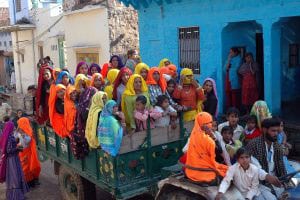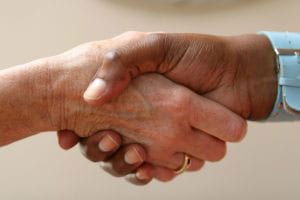According to a report recently published in the Inter Press Service, since the advent of multidrug therapy in 1982, over sixteen million people have been cured of Hansen’s disease, more commonly known as leprosy. These numbers were made available by the World Health Organization (WHO). Yet the struggle is still on in some areas, especially in Brazil.
This challenge has been taken up by Yohei Sasakawa, President of the Nippon Foundation in Japan. Professor Sasakawa has recently toured northern Brazil and intends to increase efforts to eliminate leprosy. He was welcomed by administrators in each of the Brazilian clinics, cities, and former leprosariums that he visited. In each instance, the Nippon Foundation was celebrated for the projects it has funded.
Children Were Separated From Their Parents
Morhan, a facility for the physically handicapped, was established in Para, Brazil in 1981. A short time later, a small group of people with a personal interest in leprosy established a separate unit for the disease.
Para, one of the first cities visited by Professor Sasakawa, was once the home of a leprosarium. The director, one of the founders of Morhan, was sent to the leprosarium in 1972 along with his two siblings. Their parents were sent to a separate facility for lepers.
It was commonplace for children to be taken from their parents who had been diagnosed with leprosy. The children were sent to orphanages. The estimate of Brazilians either afflicted with or affected by the disease is between 15,000 to 20,000. The consequences of hanseniasis are evident even today because of a previous law that required people with leprosy to be isolated.
The director’s parents were awarded the right to receive compensation for the treatment they received by the State. Their children, however, are still fighting for their own rights as victims.
About Maranhão
Maranhão, one of the states Professor Sasakawa visited, has an extremely high rate of leprosy cases. For every ten thousand people 4.4 new cases are registered. Their local Health Ministry reports an average of 3,125 cases each year. This is despite the fact that Maranhão has been given many more advantages than twenty other high-risk municipalities through a special project. The project originated in 2017 and is designed to detect and treat leprosy in each of these municipalities.
Maranhão has also reported an unusually high number of infected children under the age of fifteen. The doctors and Health Ministry suspect this is an indication that these children may be housed with adults who have not received treatment.
About the Nippon Organization
The Nippon organization funds several projects in Brazil. One such project is to provide information about the disease through the internet and also through telephone contact. One of the main goals is to reduce prejudice, discrimination, and stigma against the disease.
In fact, Professor Sasakawa made an interesting comment which clearly shows his dedication. He said, in effect, that people who are prejudiced against the disease are sicker than the people who have the disease.
The Unique Aspect of Leprosy
In Brazil, the disease is known as hanseniasis. Professor Sasakawa explains that it differs from malaria in that it has none of the usual symptoms such a fever and chills. It is subtle. It is not transmitted as easily as other diseases.
In order for the disease to be transmitted, a person would have to be in close contact for months with a leprosy patient who had not yet received treatment. In addition, if a leprosy patient has had even a few days of antibiotics, that patient cannot spread the disease.
Leprosy’s symptoms, such as numbness in areas on the skin, may not show up for years. But at that point, when it does, the disease is irreversible. Leprosy involves the loss of fingers and the hands or the limbs become paralyzed.
Although early detection is stressed, it is a difficult task to accomplish. There are methods of screening available. The challenge is to educate people about the disease then attend to their screening as soon as possible.
The Length and Value of Treatment
Treatment for leprosy can extend up to a year. The minimum time for treatment would be around six months. The length of time required would depend upon the severity of the disease. For this reason, doctors are diligent about following up with patients to be certain that they will continue the prescribed medication as it will kill the bacteria.
In a creative effort to improve nutrition and encourage patients to continue their medication, the Foundation is providing baskets of food to patients and their families in the interior.
Judging by the response from administrators who met with Professor Sasakawa during his tour of northern Brazil, his trip was a success. Emphasis was put on early diagnosis and better media coverage which would alert more people about the need to be tested.
Were you aware that leprosy is still prevalent in other parts of the world?


.jpg)





